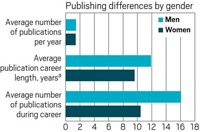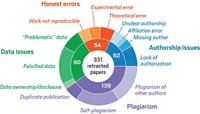Advertisement
Grab your lab coat. Let's get started
Welcome!
Welcome!
Create an account below to get 6 C&EN articles per month, receive newsletters and more - all free.
It seems this is your first time logging in online. Please enter the following information to continue.
As an ACS member you automatically get access to this site. All we need is few more details to create your reading experience.
Not you? Sign in with a different account.
Not you? Sign in with a different account.
ERROR 1
ERROR 1
ERROR 2
ERROR 2
ERROR 2
ERROR 2
ERROR 2
Password and Confirm password must match.
If you have an ACS member number, please enter it here so we can link this account to your membership. (optional)
ERROR 2
ACS values your privacy. By submitting your information, you are gaining access to C&EN and subscribing to our weekly newsletter. We use the information you provide to make your reading experience better, and we will never sell your data to third party members.
Science Communication
YouTube is home to 800 active chemistry channels
Most channels are produced by independent creators with no declared institutional affiliation
by Dalmeet Singh Chawla, special to C&EN
September 4, 2024
| A version of this story appeared in
Volume 102, Issue 28

YouTube is home to 1,619 channels producing English-language content on chemistry. Around half of them have uploaded at least one video in the past 12 months, and roughly 600 have uploaded at least one in the past 3 months.
That’s according to a new analysis—published before peer review on chemRxiv—conducted primarily by undergraduate students at the University of Strathclyde.
According to the study, 84% of the content was produced by independent creators with no declared affiliations with any institution, corporation, or other body. The backgrounds of 57% of channel creators were not readily available, the study noted.
The study found that 71% of the channels were dedicated to chemistry theory or exam review. Among the rest were popular-science channels such as Reactions, produced by the American Chemical Society, which also publishes C&EN.
The study examined chemistry content uploaded between 2005 and 2023 and found that uploads spiked in 2007, 2011, and 2020. The authors attribute the three spikes to a growth spurt for YouTube, the proliferation of broadband internet and smartphones, and the COVID-19 pandemic, respectively.
Only 47% of the channels list a country of origin. The US tops the list of countries with chemistry YouTube channels, at 302, followed by India, at 184, and the UK, at 78.
Out of the 1,619 channels, 789 had fewer than 1,000 subscribers, and 401 had between 1,000 and 5,000 subscribers. The study found that 323 channels had between 5,000 and 100,000 subscribers, while just 24 channels had more than 1 million subscribers.
About two-thirds of the channels—1,046—produced mostly or only chemistry content, the study found. The authors classified the remaining 572 channels as multidisciplinary because they produced chemistry videos less than 95% of the time.
“As it turns out, chemistry is huge on YouTube,” says study coauthor Lewis MacKenzie, who is a chemist at the University of Strathclyde. With the rise of the platform, “long-form content about chemistry has become quite popular.”
Most channels, however, become inactive after uploading content for 1 to 2 years, the study found. “A YouTube channel is a lot of work, and keeping it up is a lot of work,” MacKenzie notes. “I’m actually quite surprised that quite as many are still active, considering YouTube has been [running] for nearly 20 years now.”
Martyn Poliakoff, a chemist at the University of Nottingham who has posted a number of chemistry YouTube videos over the years, notes that the analysis doesn’t consider the fact that some videos found on YouTube sites are reposted and not original. “I was surprised that there was a relatively small number of institutional channels,” he adds.
MacKenzie previously reported that chemistry is not well represented in science podcasts. His 2019 study found that only around 3% of science podcasts covered chemistry as their main topic, compared with 18% covering physics and astronomy and 14% covering biology.




Join the conversation
Contact the reporter
Submit a Letter to the Editor for publication
Engage with us on Twitter